Tag: New Bern
Watersheds
March 28, 2023
Watersheds
Tar-Pamlico River Basin
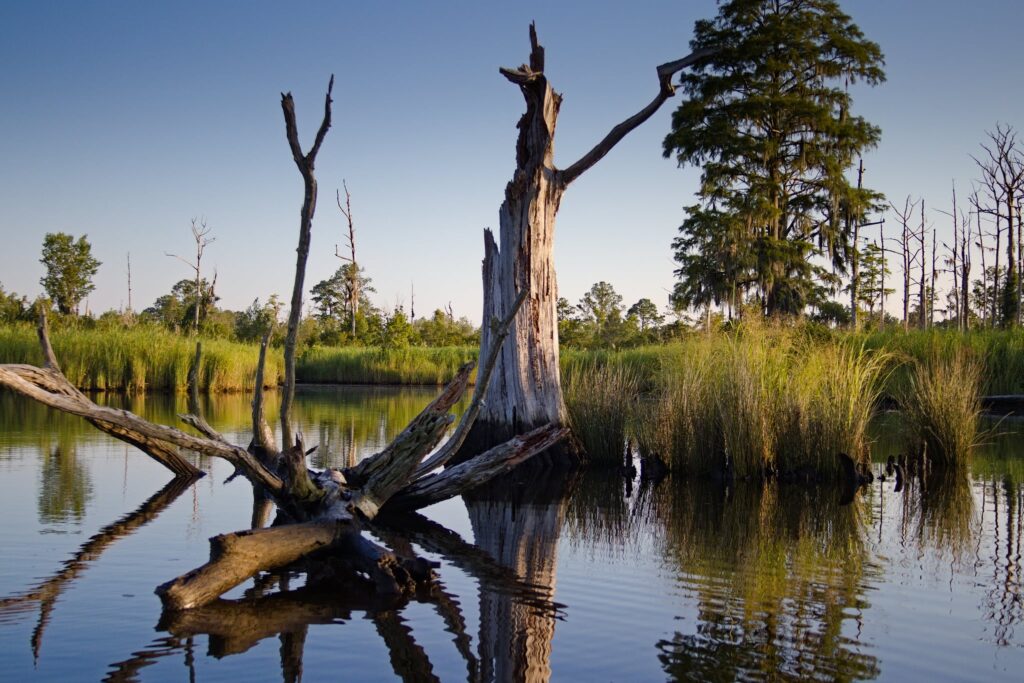
The Tar River begins as a freshwater stream in the Piedmont near Roxboro, flowing east to become the Pamlico River near Washington, then draining into the Pamlico Sound before meeting the Atlantic Ocean. Major tributaries in the upper basin include Swift, Fishing and Tranters creeks and Cokey Swamp, as well as the Pungo River in the lower basin. It also includes Lake Mattamuskeet, home to Mattamuskeet National Wildlife Refuge and, at more than 18 miles long and six miles wide, is the largest natural lake in the state.
The Tar-Pamlico River Basin is made up mostly of wetlands and forested areas covering about 55% of its area, with about one-quarter made up of agricultural land and a small portion of urban, developed areas. This basin is rural when compared to the Neuse, which is similar in size and hydrology.
A gateway to the coast, the Tar-Pamlico feeds into a highly productive estuary that is a nursery for more than 90% of all the commercial seafood and recreational fish caught in North Carolina. The Albemarle and Pamlico sounds comprise the second-largest estuary system in the United States.
Sadly, the Pamlico River has been plagued with environmental problems. Excessive growth of algae and increasing numbers of diseased and dying fish over the past two decades suggest a decline in water quality. Municipal treatment plants that discharge wastewater into rivers and streams and runoff from nonpoint sources, such as farmland, timber operations and urban areas, also contribute pollution. These sources increase levels of the nutrients in the watershed — primarily nitrogen and phosphorus – resulting in an unbalanced ecosystem.
Neuse River Basin
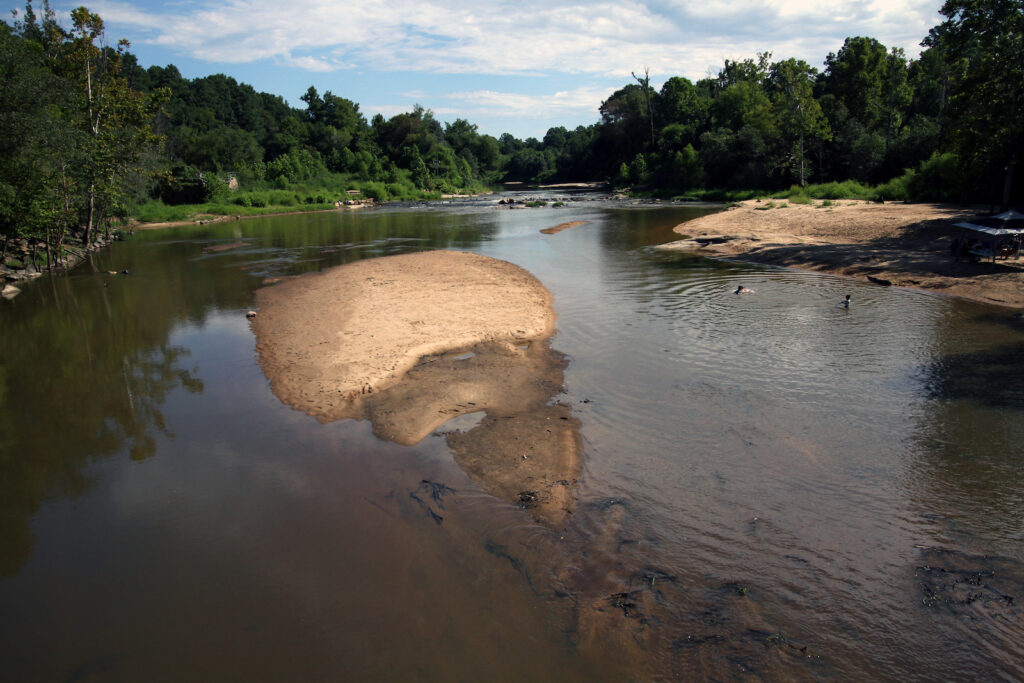
The longest river in North Carolina, the Neuse River stretches 248 miles from the Falls Lake Reservoir Dam in the Piedmont to its mouth at the Pamlico Sound and the state’s first capital of New Bern. At its mouth, six miles across, it’s the widest river in U.S. and part of our nation’s second-largest estuary. Major tributaries include Crabtree, Swift and Contentnea creeks and the Eno, Little and Trent rivers. The Neuse River Basin is a critically important body of water for nearly one-sixth of the state’s population.
Among the biggest threats to water quality in the lower Neuse River are large quantities of nutrient pollution, especially nitrogen and phosphorus.
Nutrient pollution is a form of water pollution, in which water is contaminated by excessive inputs of nutrients.
This type of pollution results from: runoff from large fertilized areas (such as golf courses), urban developed areas and farm fields treated with fertilizer, pesticides and herbicides; animal waste washed from lawns; and industrial meat production facilities discharging into our rivers and streams. Swine concentrated animal feeding operations (CAFOs), for example, contribute 60% of the excess nitrogen and phosphorus.
Some nutrients can be beneficial to aquatic life in small amounts, but large amounts can cause excessive plant growth, algal blooms and low levels of dissolved oxygen in the water.
To a lesser degree, water quality in the Neuse River Basin is being affected by pollution from more than 400 industrial and municipal sites that are allowed by state permit to discharge treated wastewater into streams and rivers. Both of the above situations can be harmful to fish and other aquatic life.
Latest News
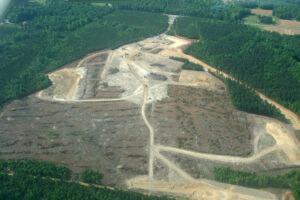
Riverkeepers eye pollution sources from the sky
May 9th 2024
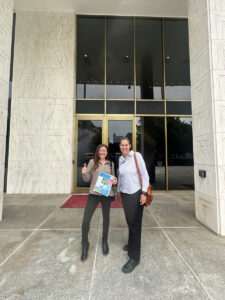
Riverkeepers, ED attend NC Conservation Network Conference
May 9th 2024
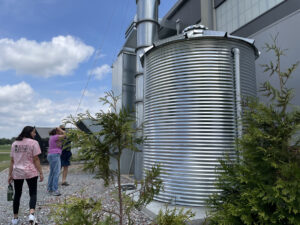
Sound Rivers staff meets up for campus stormwater tour
May 9th 2024
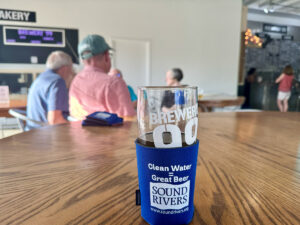
Wetlands a hot topic at Brewery 99 meetup
May 9th 2024
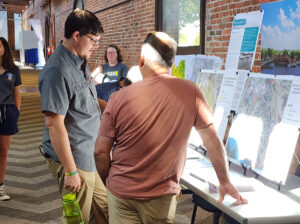
Open house a forum for Jack’s Creek concerns
May 9th 2024
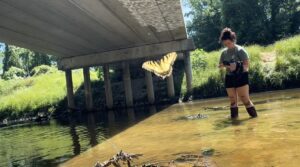
Sound Rivers investigates Swift Creek hog waste spill
May 2nd 2024
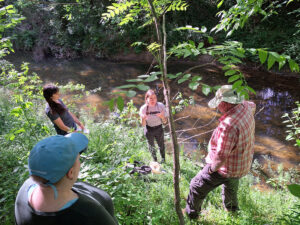
Riverkeeper, association partner for Ellerbe Creek monitoring
May 2nd 2024
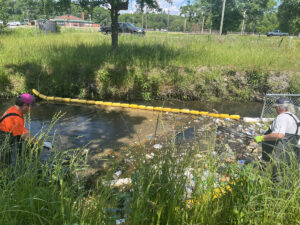
Adkin Branch relieved of 70 lbs of trash
May 2nd 2024

Riverkeeper weighs in on Raleigh tap-water woes
April 25th 2024
Riverkeepers
March 28, 2023
Riverkeepers
Samantha Krop
Neuse Riverkeeper
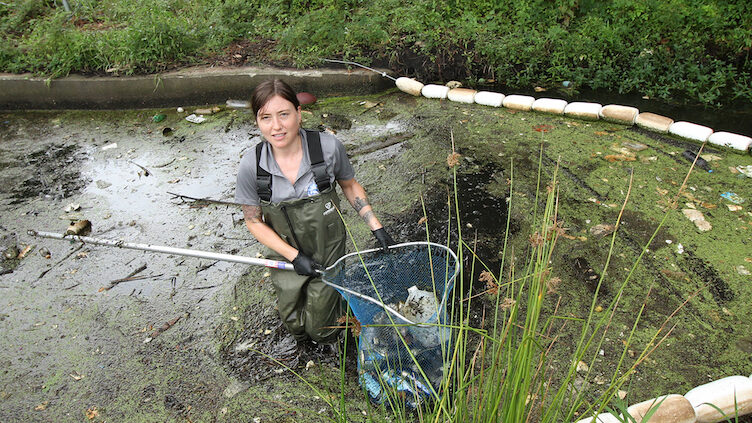
“I grew up swimming, boating and kayaking in the brackish waters and swamps and have always, always, been in love with rivers. … I’m honored to be working with the people of the Neuse to advocate for the river and all those who rely on it.”
Samantha Krop is the Neuse Riverkeeper, Sound Rivers’ advocate for the health of the Neuse and its many tributaries, from Durham to Havelock. Sam came to Sound Rivers from Oregon, where she served as the coalitions coordinator for the Forest Waters Coalition, a network of conservationists and community members working together to create stronger protections for Oregon’s forested watersheds. Prior to her full-time role as a coalitions builder, she taught undergraduate- and graduate-level courses in environmental justice and pedagogy at the University of Oregon. A native of Florida’s Gulf Coast, Sam is no stranger to North Carolina rivers: she spent summers at Camp Celo on the shores of the South Toe River in the Black Mountains, a place where her love of nature and future career as an environmental advocate — guided by the central tenets of equity and inclusivity — was forged.
Sam currently serves on the Raleigh Stormwater Advisory Commission.
Sam can be reached at samantha@soundrivers.org.
Katey Zimmerman
Pamlico-Tar Riverkeeper
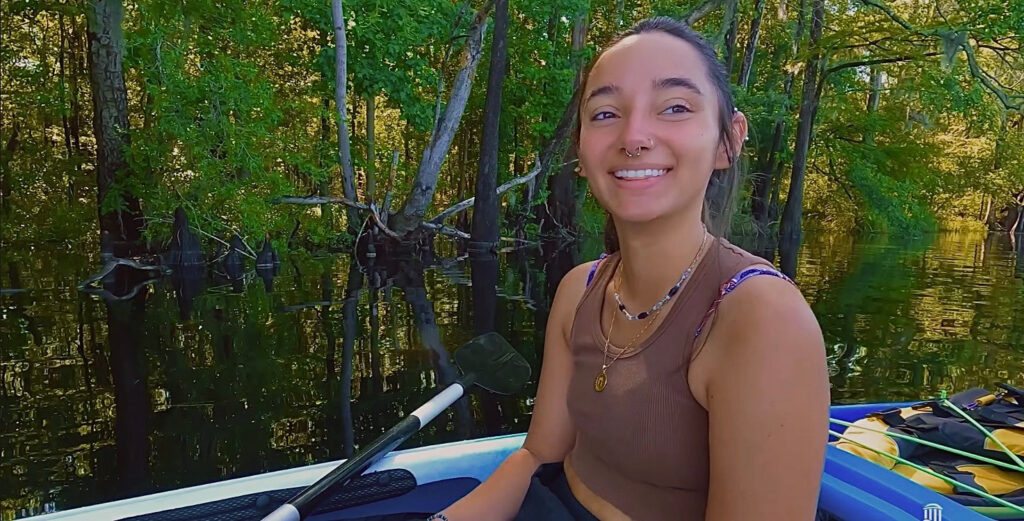
“Growing up, I always said that I wanted a career where I could make a difference, make an impact, and I’ve always had a love for the environment. The reason this is what I want to do is because I truly care about protecting the rivers and all of their natural resources, and sustainability as a whole.”
Katey Zimmerman graduated Magna Cum Laude with a degree in sustainability and coastal resilience from Coastal Carolina University in Sound Carolina. Her background includes running the Swim Guide program for the Waccamaw Riverkeeper and coordinating outreach events, teaching children and adults about the watershed and how to protect it.
Originally from Pennsylvania, just north of Philadelphia, Katey was drawn to Coastal Carolina University’s outstanding marine sciences program. After taking a sustainability class as a freshman, her interest shifted, and when Coastal Carolina added a sustainability major the following year, her major did too. But it was when she began working with the Waccamaw Riverkeeper that she truly found her calling.
Katey can be reached at katey@soundrivers.org.
Landscaping for Clean Water
March 21, 2023
Polluted Stormwater Runoff

When rain falls in a natural setting, almost all stormwater infiltrates the soils and groundwater or is taken up by vegetation. But when land is developed, the impervious cover (roads, rooftops, driveways, parking lots) increases the volume of stormwater that is not absorbed by the land and accelerates the transport of stormwater across the surface of the land. As impervious cover increases, so does the volume and velocity of contaminated surface runoff into streams, lakes and sounds.
Polluted stormwater runoff, including sediment from poorly maintained construction sites, is the number one reason for poor water quality in North Carolina. Sediment can cause severe problems for creeks, rivers and estuaries on which we depend for our drinking water, recreation, wildlife habitat and fishing. Stormwater is one of the main causes of pollution in the Neuse and Tar-Pamlico Rivers.
Stormwater pollution results in a multitude of economic losses. Sediment, toxic pollutants and pathogens in stormwater leads to poor quality fish catch and financial losses for the commercial and recreational fishing industries. Contaminated beaches result in medical expenses to treating water related illness and the beach community suffers from losses in sales and services. Stormwater pollution leads to increased water treatment costs. Increased stormwater runoff creates significant flood damage repair costs and dredging costs. Measures to decrease stormwater impacts can significantly increase property values.
Landscaping for Water Quality
 In order to deal with the increased problems from polluted stormwater runoff, Sound Rivers began a restoration program in 2010 to implement on-the-ground projects to restore water quality.
In order to deal with the increased problems from polluted stormwater runoff, Sound Rivers began a restoration program in 2010 to implement on-the-ground projects to restore water quality.
The photo on the left is a created stormwater wetland constructed in 2015 at Edgecombe Community College in Tarboro. The wetland treats stormwater from the campus main parking areas. Two more created wetlands were built, along with a rain garden and bioretention cell. Click to view image of educational sign.
A similar project has been completed on East Carolina University’s campus in Greenville, NC. Sound  Rivers in cooperation with ECU built one created wetland, three bioretention cells (engineered rain gardens) and installed permeable pavement on the campus to improve Green Mill Run, a stream that runs through the heart of the city and the campus.
Rivers in cooperation with ECU built one created wetland, three bioretention cells (engineered rain gardens) and installed permeable pavement on the campus to improve Green Mill Run, a stream that runs through the heart of the city and the campus.
The program expanded in 2017 and Sound Rivers is currently working with more than 20 community college, private college and K-12 campuses to plan and construct stormwater projects.
What Can You Do? Everyone can do their part to reducing polluted stormwater runoff. Limit your impact by:
- Applying fertilizers and pesticides sparingly and do not apply before rain events.
- Test soil first to determine fertilization needs. Tips.
- Reduce bacteria by picking up after your pets and dispose of the waste properly.
- Wash your car on your lawn where the chemicals and soap can be absorbed and filtered by the soil instead of washing directly into a stream.
- Dispose of lawn clippings in a compost pile.
- Harvest and reuse rain water via rain gardens, rain barrels and cisterns.
- Preserve and plant trees.
- Maintain your septic tank! Tips.
Stormwater and Your Rain Garden
More Information

Pamlico Paddle
March 21, 2023
 They’re back …
They’re back …
Pamlico-Tar Riverkeeper Jill Howell and Environmental Projects Coordinator Clay Barber headed out Oct. 17 on another epic paddling adventure, this time, a five-day, 70-mile kayaking trip down the Pamlico River.
Sound Rivers staff and volunteers gathered at Havens Garden in Washington on Sunday for a land-based cleanup on the shores of the Pamlico and nearby creeks, followed by a send off of our intrepid paddlers from the Havens Garden boat ramp on Runyon Creek.
Jill and Clay are taking up where they left off on last October’s Tour de Tar, a 10-day trip from Oxford to Washington, paddling from Havens Garden in Washington to the public boat ramp in Swan Quarter. You can follow Clay, Jill and Jill’s first mate, Miller, (also known as the Adventure Pup) and their adventures here, or at @soundriversnc Facebook and Instagram.
Click on the links below to see what Jill, Clay and the Adventure Pup, Miller, have been up to!
| Thank you, sponsors, for you generous support! |
 |
 |
 |
 |
 |
 |
 |
Betsy & Joe Hester
Rick Zablocki Linda Boyer |
 |
BY SUPPORTING JILL AND CLAY’S PAMLICO PADDLE, YOU’RE SUPPORTING THEIR WORK ALL YEAR LONG!
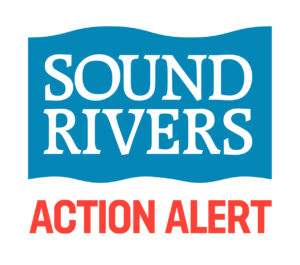
Protect our wetlands
March 21, 2023
Protect our wetlands
NCDEQ SEEKS COMMENTS FOR TEMPORARY WETLANDS RULES
In April 2020, the Environmental Protection Agency and the U.S. Army Corps of Engineers issued a new rule eliminating federal oversight for millions of acres of wetlands and small streams. The Southern Environmental Law Center has estimated the rule resulted in a loss of federal protections for roughly 900,000 acres in the Cape Fear and Neuse river basins alone — much larger across the Coastal Plain as a whole, or statewide.
North Carolina has already lost more than 50% of our wetlands and those that remain are vital for absorbing stormwater and preventing flooding downstream, among the many other benefits they provide. READ MORE ABOUT THE IMPORTANCE OF WETLANDS HERE!
This month, the NC Environmental Management Commission (EMC) has proposed a new rule that would establish a state permitting program to protect our wetlands and manage flooding in our communities. Help us show the EMC that North Carolinians support protecting our wetlands by sending a letter today!
Wetlands and small streams play a critical role in filtering harmful pollution, protecting drinking water, sustaining our wildlife, and reducing flooding downstream. The proposal by the EMC fills a critical permitting gap created by the rollbacks of federal wetland protections.
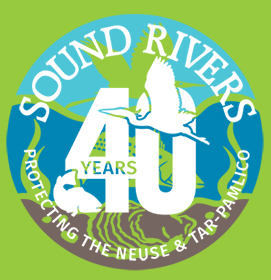
Sound Rivers documentary explores past, present and future
March 21, 2023
Sound Rivers documentary explores past, present and future
Sound Rivers’ documentary premieres in the fall
We’re taking Sound Rivers’ story to the big screen!
Of the several projects currently underway to highlight Sound Rivers’ past 40 years of advocacy and education, one will tell its story visually, from its founding by two separate organizations to its work moving forward, through the voices of our storytellers: founders and partners, those fighting for clean water and the next generations of environmental advocacy.
Interweaving the common thread of community activism through the organization’s past, present and future, the documentary will unite viewers of all demographics in a common purpose: to be a part of the change.
Tackling this project is Washington native and filmmaker Rain Bennett, who has a mission to inspire people of all ages.
“I hope to inspire action — specifically from the Millennial and Gen-Z generations. I am aiming at the hearts of younger eastern North Carolina locals to take up the fight Sound Rivers began four decades ago,” Bennett said.
After several months of honing the narrative and recruiting our storytellers and experts to provide background and the science behind issues, Bennett began filming on March 31 with interviews of Dick and Becky Leach (instrumental in founding Pamlico-Tar River Foundation) and Doris Stith (community activist, who experienced the historical flooding of Princeville during Hurricane Floyd in 1999). He wrapped up filming on Aug. 13, with some amazing aerial footage of Pamlico-Tar Riverkeeper Jill Howell patrolling the Tar River.
“I honestly had no idea all the work Sound Rivers had done over the past 40 years. In my preliminary research, I’ve become so aware of the challenges they face — and that we all face — and the importance of their mission,” Bennett said. “To create this documentary means I get to do what I love, to help protect a place I love and fight for the people whom I love. I am forever grateful for that.”
In October, Sound Rivers will premiere the film during a virtual event. Stay tuned for details!
Be on the lookout for a sneak-peek: a trailer for the Sound Rivers’ 40th-anniversary documentary will be released soon!
Gift Membership
March 21, 2023
Gift the Gift of Clean Water
Looking for the perfect gift? Gift a Sound Rivers membership to your loved one! Your gift recipient will:
- Receive a card letting them know you made a gift of clean water in their name, and a Sound Rivers sticker
- Begin receiving our quarterly newsletter, Currents
- Be recognized by name in our Annual Report.
Use the link below to make a special gift membership!
Please note: Fill out the first part of the contact information on the form with YOUR contact information to ensure proper credit card processing, and the enter your gift recipient’s information below in the fields indicated. If you would like to remain anonymous (and not let the gift recipient know you are the giver) please indicate that in the “comments” field.
[imic_button colour=”btn-primary” type=”enabled” link=”https://crm.bloomerang.co/HostedDonation?ApiKey=pub_acc3f62f-8928-11e9-9f3d-0aa640fb8062&WidgetId=10568704″ target=”_blank” extraclass=”” size=””]Give the gift of clean water here![/imic_button]
Want to give a gift membership but would rather make your purchase via mail? Send your check to Sound Rivers, PO Box 15451, New Bern, NC 28561, and include your gift recipient’s name and address.
NC Pipeline Watch
March 21, 2023
Update:
North Carolina Pipeline Watch (NCPW) Mapping System
Alleghany Blue Ridge Alliance (ABRA) and their Pipeline Compliance Surveillance Initiative (CSI) program has built a new mapping system showing the path of the pipeline that allows us to target pipeline crossings at streams and wetland crossings for monitoring locations.
Background
Since the proposal of the Atlantic Coast Pipeline (ACP), Sound Rivers has been working to oppose this project as it threatens the most vulnerable communities and ecosystems, and will only further entrench extractive energy industries.
One of the many strategies Sound Rivers has pursued in our opposition to the pipeline is the development of North Carolina Pipeline Watch (NCPW), a community training and monitoring program. NCPW was formed by Sound Rivers in coordination with the Sierra Club, Winyah Rivers Foundation, and Cape Fear River Watch. When construction on the ACP began in North Carolina in 2018, Sound Rivers worked to mobilize and train volunteers through NCPW to monitor construction activities, create infrastructure to collect field reports, and have regional experts bring those issues to the agencies for enforcement. These activities were meant to encourage community members to take action, identify illegal construction practices (e.g., sediment and erosion control violations) detrimental to the health of our waterways, and ultimately stop the construction of the pipeline.
Pipeline construction has been stalled since December 2018 because eight federal and state permits have been vacated by the courts; decisions that the ACP partners are vigorously attacking. Additionally, the fate of the pipeline ultimately hinges on a case heard in the Supreme Court this past February as well as efforts by energy companies’ lobby for federal rule changes in their favor. To date, 6% of the pipeline has been constructed and we fully anticipate that construction could restart in North Carolina in 2020 with the reissuance of a biological opinion by the US Fish and Wildlife Service. The ACP partners have prioritized construction in North Carolina once legal hurdles have been cleared.
Sound Rivers paused trainings for NCPW when construction was put on hold over a year ago. Due to the recent Supreme Court hearing and in anticipation of the reissuance of the biological opinion, Sound Rivers and a number of other community and environmental groups including Winyah Rivers Foundation, Cape Fear Riverwatch, Sierra Club, Blue Ridge Alleghany Alliance, and Appalachian Voices have mobilized to re-start NCPW.
Given the current situation around COVID-19, Sound Rivers and our NCPW partners are working on how to make this program, which is centered around engaging with and training volunteers, possible for when construction does resume. We will continue to provide updates on the status of ACP construction and opportunities to be involved in monitoring efforts.
Blue Living Tips
March 21, 2023
 We understand the impact that a changing climate is having on our daily lives. The problem seems overwhelming. But there are many things we can do individually that together will make a difference. See some of the tips below. If you have a tip to share, please email it to info@soundrivers.org.
We understand the impact that a changing climate is having on our daily lives. The problem seems overwhelming. But there are many things we can do individually that together will make a difference. See some of the tips below. If you have a tip to share, please email it to info@soundrivers.org.
- Reduce, reuse and recycle: Yep, that still works!
- Use water more efficiently: Less water, less energy to pump to your home.
- Commit to eating more plants and less meat: Livestock contribute 14.5% of global emissions. You can significantly lower greenhouse gas emissions by eating less meat, choosing local foods when possible and buying food with less packaging.
- Install a smart thermometer and other ways to reduce energy use at home
- Plant more trees and/or support groups who do
- Vote! Check out resources like vote411.org
- Be active in your community and find ways to support youth led movements
“Unless someone like you cares a whole awful lot, nothing is going to get better. It’s not.” the Lorax (Dr. Suess)








